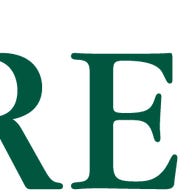Make Agile a stepping stone toward future fit adaptability

COVID-19 has accelerated the need for enterprises to adapt to rapidly changing market conditions. The pandemic taught us that we really don't know what's around the corner. We can have a great vision, long-term plans, and innovative ideas, but a natural disaster or geopolitical event could wipe out all those carefully laid plans.
Analyzing the future through a crystal ball is not enough. Creating upfront, fixed plans doesn't work. Instead, we need to be ready for continuous change, be adaptive, creative, and resilient, and adjust quickly with "just in time" planning and execution. Being adaptive is one of three core competencies of what Forrester calls a future-fit organization. Let's explore how to reach adaptability and help you deal with the unknown, drive organizational flexibility, and react to rapid change.
The Agile Manifesto Is At The Heart Of Any Truly Agile Organization
For many tech leaders, being adaptive is the same as business agility. However, the execution engine for adaptability is your software development and delivery capabilities. Your business can't be adaptive if you don't have great software delivery capabilities. That's why "Agile" has become foundational to being adaptive and for achieving business agility. Forrester research shows that over 72% of enterprise development leaders executed Agile capabilities or were planning to be more Agile in 2019–2020. The Agile Manifesto, published almost 20 years ago, is still the cornerstone for any truly Agile organization.
The first point is this: Being truly Agile goes beyond the Webster dictionary description of the adjective. Webster defines agile as "having a quick resourceful and adaptable character" or "marked by ready ability to move with quick easy grace." Agile as defined by the Agile Manifesto carries a broader meaning: the core values and the 12 principles. The Manifesto's definition of Agile carries the meaning of the Webster dictionary definition as a mandatory condition, but not as a sufficient one.
So, what does it mean for enterprises in 2021 to be truly Agile and therefore adaptive? Start by going beyond just adopting agile (lowercase), and develop your cultural DNA and organizational strategy around the values and principles established in the manifesto. In 2021, we will see those values and principles being adopted and leveraged not just for software development, but also for other product development programs/projects, whether they're in sales, marketing, or other business areas.
Build Your Adaptive Enterprise On Agile Done Right
Leveraging the Agile quality based on the manifesto's values and principles is the first vital step to becoming a future-fit organization that leverages adaptability as a way to drive customer value and meet enterprise business goals. This means:
- Changing culture and behavior. From the board to executive leaders and from managers to the troops on the ground, truly Agile organizations put a huge focus on change management programs. This change is inspired by the Agile values and principles. Organizations look for adaptable characters (Agile leaders) to lead that change throughout the enterprise, where executives and managers need to become what Robert K. Greenleaf called "servant leaders" in 1970.
- Creating a fluid organization. Cultural and behavioral changes are often blocked by organizational siloes. That's why organizations adopting Agile look for more fluid and dynamic team structures vs. siloed business functions. When people and teams are forced into siloes, the communication and collaboration value of the manifesto is diminished. New organic org structures like tribes and squads or swarms (fluid teams) that help overcome communication walls bring more autonomy and servant leadership.
- Adopting new ways of working with practices over process. This means adopting new practices that leverage broader collaboration, direct communication, and connection across teams and throughout the enterprise. Developing practice mastery helps solve unknown and new problems that are typical for innovative efforts, rather than offering prefixed bibles of process with process masters predicating them. Using agile frameworks and methods to learn about those practices helps you be Agile (e.g., Scrum, XP, Spotify, and select portions of SAFe).
- Focusing on delivering business value. In software development, as in any type of product development, products are created because they create value for your clients and business. Of course, in addition to business value, Agile also encourages quality, efficiency, and progress improvement, and employee experience engagement. Many application development and product teams end up leveraging those Agile metrics.
- Moving from project to product. In the recent update to the Scrum guide made by two of the fathers of Agile and Scrum, Ken Schwaber and Jeff Sutherland, product goals have become a central concept that product backlogs in Scrum need to focus on. Scrum is still very relevant in the Agile world, as 72% of Forrester respondents in the Agile state-of-the-market panel in 2019 confirmed. Our experience and research show us that having strong business product owners for business products on each Scrum/squad/pod team (or whatever you may call them) makes a huge difference.
- Increasing end-to-end business agility of value streams. While Agile tears down the wall between business and developers, DevOps tears down the wall between developers and IT operations. Therefore, Agile plus DevOps is the best recipe for creating close partnerships to provide end-to-end business agility in business value streams, where developers build the Ferraris and DevOps build the freeways so that great cars can run on great highways.
If you want to avoid your organization just paying lip service to Agile, start from the manifesto: Adapt its values and principles at scale, and with every value stream, extend your agility. Done well with discipline and focus, you'll be adaptive and ready for the next unknown.
To understand the business and technology trends critical to 2021, download Forrester's complimentary 2021 Predictions Guide here.
This post was written by VP and Principal Analyst Diego Lo Giudice, and it originally appeared here.